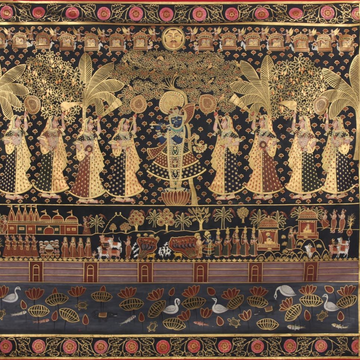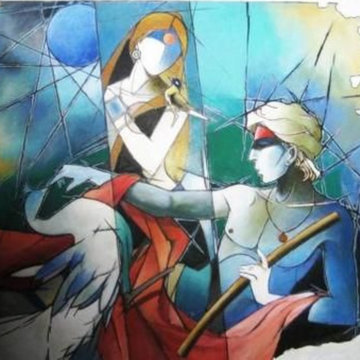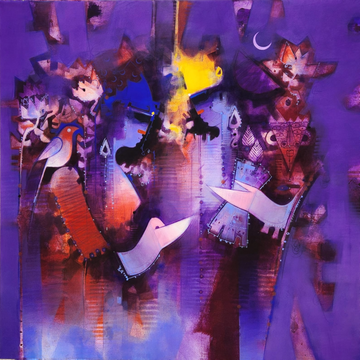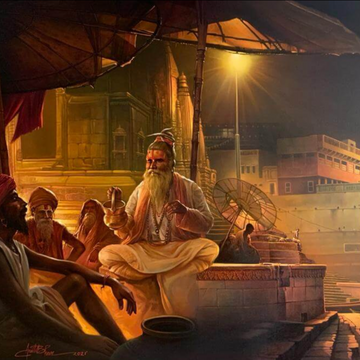Pichwai: Finding it’s Way From the Glorious Temples of Nathadwara to the Contemporary Homes

Pichwai is a traditional Indian art that was developed in the small town of Nathdwara near Udaipur, Rajasthan. Started over 400 years ago, this art form illustrates the cheery and gratifying stories of Lord Krishna’s life.
Pichwai is a traditional Indian art that was developed in the small town of Nathdwara near Udaipur, Rajasthan. Started over 400 years ago, this art form illustrates the cheery and gratifying stories of Lord Krishna’s life. Pichwai is often created by a group of artists working together. Owing to the small details and intricate work, it takes many months to paint a single Pichwai painting. These paintings are created by the people of Pushti Marg sect, which was founded by Shri Vallabhacharya back in the 16th Century.

Pichwai is a combination of two words; pichh which means back and wai translates to cloth hanging, thus meaning hanging at the back, which is how the paintings were traditionally used; to hang behind Shrinathji’s deity in the temple. Conventionally, this art form was made to decorate the Shrinathji temples in the native town. Pichwai paintings were used to commemorate various incidents and festivals in Lord Krishna’s life. However, over the years, these paintings have made place in art lovers’ hearts and thus their homes.

It takes tremendous skills and patience to create these stunning Pichwai paintings as the artists have to focus on the finest details, expressions on Krishna and Gopis’ faces, and are painted with precision. These paintings revolve around Shrinathji i.e. life of Krishna at the age of seven years. Radha, other gopikas, Krishna’s other friends, the young cowherds men, peacocks, cows, lotuses, etc. often accompany Shrinathji in these paintings.

Pichwai paintings depict the traditional celebrations of Raas Leela, Govardhan Pooja, Sharad Purnima, Annakoot, Diwali, Janmashtami, Holi, etc. Often, the painting would portray one incident or festival from Krishna’s life surrounded by numerous other smaller images, illustrating various other stories from Krishna’s life.

Portraying the life of Shrinathji, this painting sets a beautiful evening scene in Gokul. As the Sun would set, Krishna would play melodious tunes on His flute. Hypnotised by those dulcet tones, Krishna’s cows would follow the sound and gather around Him. He would then caress them, tend them and guide them back home. After a long tiering day of hard work, Krishna’s flute would help the cows and the cowherds men relax and look forward to going back home.

Pichwai painting often narrate the stories of Krishna with Gopis; the milkmaids of Gokul, who shared a love-hate relationship with Him. Even though Krishna’s constant notoriety kept them on their toes, they were fond of His kind heart. He would steal their curd and butter, he would also create hinderance in the Gopis’ path, though all this irritated them, they still loved Krishna for His innocence and would ignore His pranks. The artists use a combination of bright and mellow colours complementing Krishna's sweet, caring yet mischievous nature.









